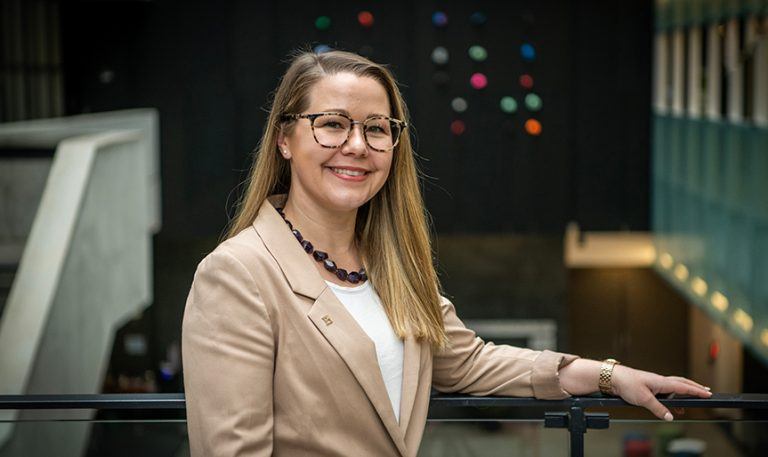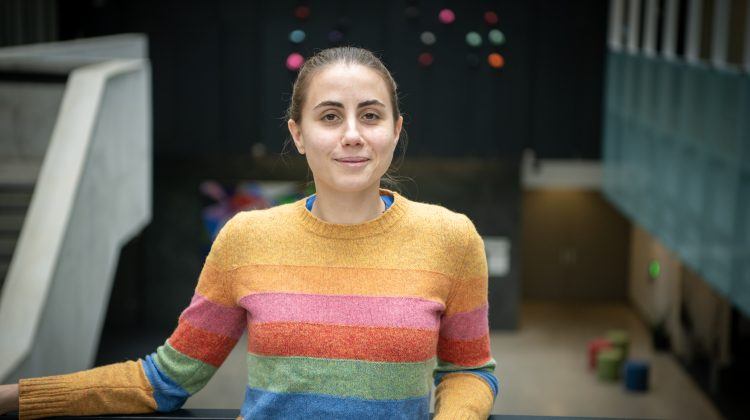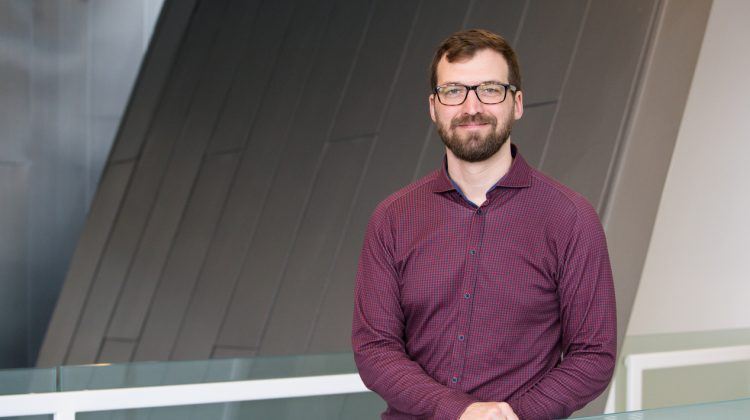People of PI: Community builder Emily Petroff
Her research helped kickstart the global hunt for mysterious fast radio bursts. Now, Emily Petroff is accelerating scientific progress by fostering human connections and collaboration.

Standing atop the 64-metre-wide dish of the Parkes Radio Telescope in New South Wales, Australia, a young Emily Petroff, fresh from her first year of undergrad, knew she was right where she wanted to be. She was working with researchers at the Australia Telescope National Facility (ATNF) as part of a 10-week student research program. There, she felt she had found her calling.
Three years later, she walked into Swinburne University of Technology in Melbourne to begin a PhD in astrophysics. The project she pitched to her supervisor was a study of the Milky Way’s interstellar medium: the loose gas and dust that fills the space between stars. She wanted to examine how light from distant pulsars – rotating neutron stars – changed as it passed through the medium.
Then a bit of scientific serendipity stepped in.
“I sat down for my first meeting of my PhD, and my supervisor said, ‘Actually, in the time since you applied to this program, we found some really interesting signals in our data – bright radio pulses – and we don’t really know where they’re coming from. Would you want to study that instead?’ And of course I did!” says Petroff.
Those radio pulses, it turns out, were among the first fast radio bursts ever discovered (better known as FRBs among astronomers today).
“It was clear that they had to be something super energetic,” says Petroff. “The big question at the time was, and still is: if they’re so energetic, is there another electromagnetic signature that’s associated with it, not just this bright radio burst? Is there a supernova? Is there a gamma ray burst? So I was starting to develop new techniques and new protocols for observing them.”
With a first-rate astronomical mystery on her hands, Petroff was in her element. But she was also beginning to discover a second passion, one that was complimentary to her research: community building.
Science is not separate and isolated from society, despite what the stereotypes might suggest. Connections between people are what make science possible, explains Petroff. This is particularly true today, in the era of large experimental collaborations.
Taking that lesson to heart, she found a new niche for herself in helping the international FRB community collaborate and coordinate with one another.
As a postdoctoral fellow, she built a catalogue for FRBs, a “one-stop shop” for people to look at what had been published about the mysterious bursts. It became a valuable resource for researchers in the field around the globe.
“I found I was doing quite a lot of community organization, which was super fun for me. I loved this community of people, and I found that I was actually pretty good at bringing together and organizing big groups of researchers to achieve a common goal,” says Petroff.
That skillset brought her to ASTRON, the Netherlands Institute for Radio Astronomy, where she helped commission a new instrument for the Westerbork radio telescope called Apertif. When her postdoc at ASTRON ended, she continued her research at the University of Amsterdam on a prestigious independent Veni Fellowship.
More and more, Petroff found that the things she enjoyed most in her work were the organizational and communication roles she filled in her community. She started to look around for ways to continue working with researchers and academics in ways that used those skills outside the tenure track.
Serendipity stepped in again when she found the CHIME/FRB Collaboration, a Canadian-led international fast radio burst search effort using the Canadian Hydrogen Intensity Mapping Experiment (CHIME) radio telescope in Canada. There, Petroff started as an assistant project manager, working her way up to the role of project manager for the collaboration in 2022.
At CHIME, Petroff leveraged her deep knowledge of FRB research while flexing her management muscles, taking on new challenges in managing operations, research, and even construction.
These days, the CHIME/FRB collaboration – which includes several researchers from Perimeter Institute – is discovering new FRBs by the thousands. That wealth of data is helping narrow down their origins (many FRBs, it is now thought, are caused by magnetars — neutron stars with immense magnetic fields), though there is still much more to learn.
Now, Petroff is bringing her scientific background, communication skills, and passion for community building to Perimeter in her role as Senior Advisor of External Partnerships. Her unique abilities as a researcher, communicator, project manager, and connector help her translate the excitement and importance of fundamental research to a wider audience, including policy makers and the public.
“This role is full of things that I really enjoy,” she says. “I have the opportunity to meet new people every day. I love learning about what they do, what they’re interested in, and why they’re interested in what they’re interested in.”
Whether she’s meeting with government partners, foreign ambassadors, academic colleagues, or industry leaders, Petroff seeks to find common ground in the hopes of building sustainable networks for innovation.
“I want people to know that the work that the researchers do here is critically important,” she says, “because it’s not just a lot of math, or a lot of smart people scribbling on a blackboard. Ultimately, the reason that we invest in theoretical physics is because the things that we are working on now will have huge implications for society down the road. It’s really important to support and encourage that.”
























































































